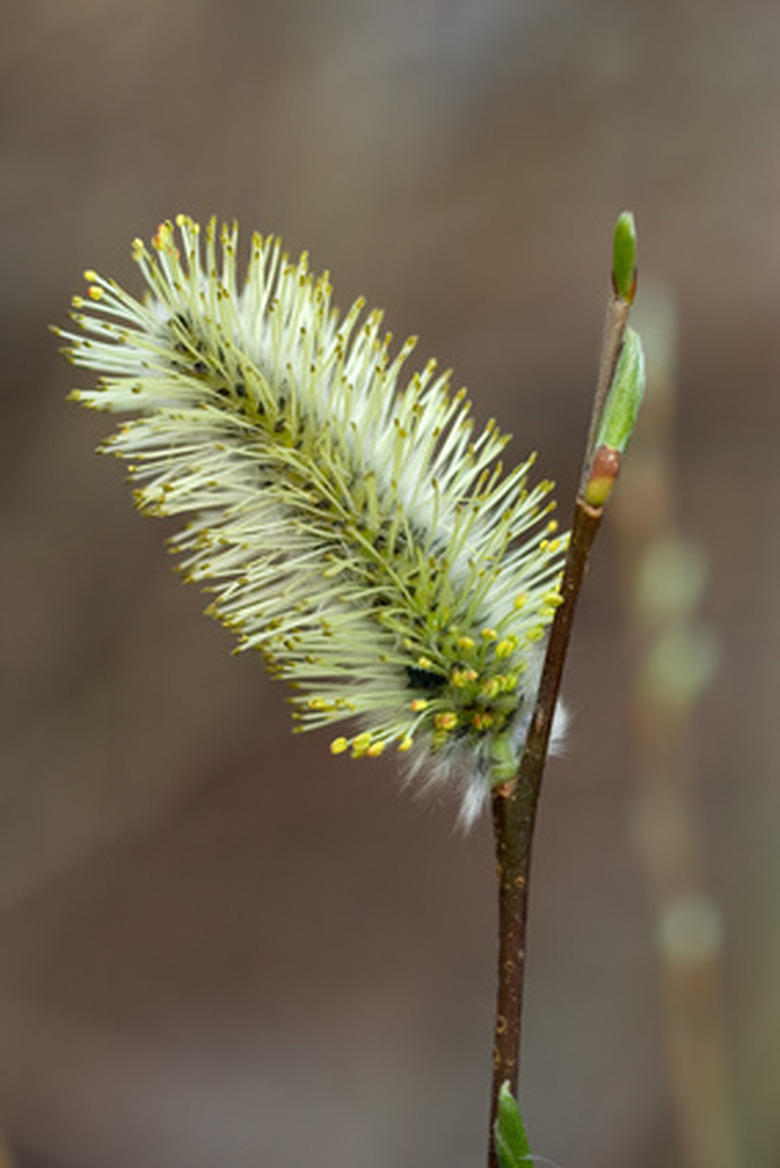Willow Trees In Kansas
All types of willow trees have things in common. The tree is either male or female. Willows love water, the more the better. The leaves are deciduous and the same shape and the flowers all grow the same way. The differences lie in the size and shape of the tree and the way the branches grow. Willows in Kansas are not weeping willows, but each one has a different type of beauty that makes it a worthy member of the willow family.
Types
Black willow (Salix nigra) is also known as the Gulf black willow and has a tendency to lean instead of growing straight. Peach-leaf willow (Salix amygdaloides Anderss) has multiple trunks and showy yellow-orange colored twigs. Coyote willow (Salix exigua Nutt.) is one of the smallest and most drought-resistant of the willow trees.
- All types of willow trees have things in common.
- Black willow (Salix nigra) is also known as the Gulf black willow and has a tendency to lean instead of growing straight.
Dimensions
Black willow grows up to 65 feet tall. Peach-leaf willow grows between 30 and 50 feet tall with upright branches. Coyote willow grows up to 15 feet tall.
Features
Black willow produces green, thin lance-shaped leaves up to 5 inches long. Green-yellow flowers grow in long clusters in March and April and are followed by brown seeds. The yellow-green flowers on the peach-leaf willow appear before the leaves in April and May and give way to tiny, red fruits. Coyote willow produces silver-gray leaves followed by white and yellow flowers in March and April.
- Black willow grows up to 65 feet tall.
- Peach-leaf willow grows between 30 and 50 feet tall with upright branches.
Environment
The black willow is found by streams, ponds and lakes. The tree grows in full sun, partial shade or full shade and a soil that is wet to moist and not allowed to go dry. Peach-leaf willow is a common tree in the north plains states in the open woods and along the edges of streams. Peach-leaf willow is adaptable to different types of soil as long as it is wet to moist and grows in full sun, partial shade or full shade. Coyote willow is found throughout the Great Plains and the southwest. Plant in full sun or partial shade and a sandy, gravely soil that is wet to moist.
Benefits
Willow trees prevent soil erosion. Animals make a meal out of the twigs and buds and songbirds and small mammals come for the seeds. Butterflies come for the nectar.
- The black willow is found by streams, ponds and lakes.
- Peach-leaf willow is adaptable to different types of soil as long as it is wet to moist and grows in full sun, partial shade or full shade.
